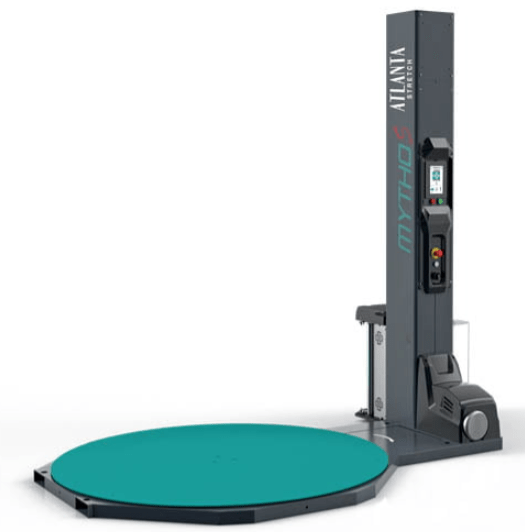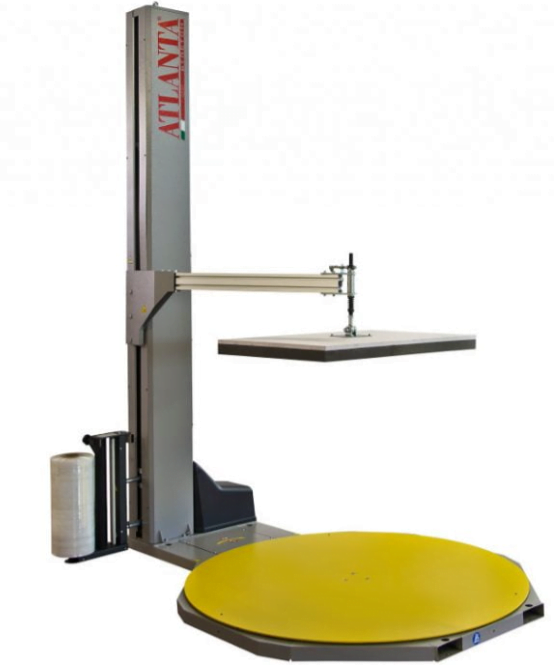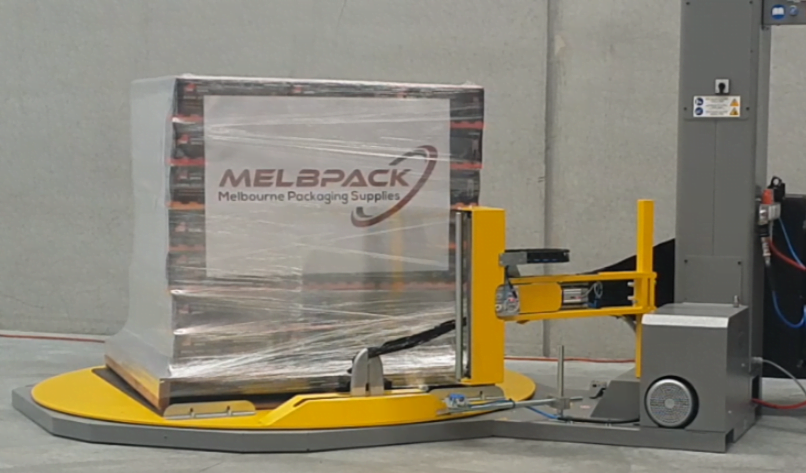Pallet wrapping plays a vital role in ensuring the safe transportation and storage of goods in the industrial packaging sector.
For a long time, manual pallet wrapping methods have been used, and they require significant labour and time. However, with advancements in technology, automated pallet wrapping systems have emerged as a game-changer.
Today, we’re going to talk about the benefits of automated pallet wrapping systems and how they revolutionise the industrial packaging process. And you can see how they might be able to help your business.
The Basics of Automated Pallet Wrapping Systems

Automated pallet wrapping systems are designed to streamline and optimise the pallet wrapping process. These systems typically consist of a stretch film dispenser, a turntable or rotary arm, a control panel, and sensors for load detection.
Unlike manual methods, automated systems automate the wrapping process, reducing the need for manual labour and improving efficiency.
Benefits of Automated Pallet Wrapping Systems
Automated pallet wrapping systems have loads of benefits, including:
Improved Efficiency and Productivity
One of the primary advantages of automated pallet wrapping systems is their ability to significantly enhance efficiency and productivity in packaging operations. These systems eliminate the need for manual labour to wrap pallets, reducing labour requirements and allowing workers to focus on other tasks.
Automated systems can wrap pallets at a faster rate, leading to increased throughput and reduced packaging time. Additionally, automated systems minimise downtime associated with manual errors or equipment malfunction, resulting in improved operational efficiency.
Consistent and Reliable Wrapping
Automated pallet wrapping systems provide consistent and reliable wrapping for each pallet. Human errors, such as inconsistent film tension or uneven wrapping, are eliminated with automated systems.
These systems ensure that the wrapping material is uniformly distributed, creating a secure and stable load. As a result, the risk of product damage during transit is significantly reduced, leading to cost savings and enhanced customer satisfaction.
Cost Savings
Implementing automated pallet wrapping systems may seem expensive initially, however they can lead to substantial cost savings for industrial packaging operations. These systems optimise film usage by precisely controlling the amount of stretch film applied to each load, minimising material waste.
On top of this, the improved load stability achieved through automated wrapping reduces the risk of damaged products and associated costs. By streamlining the packaging process and reducing labour requirements, businesses can optimise labour resources and potentially reallocate workers to other value-added tasks.
Enhanced Safety
Automated pallet wrapping systems prioritise worker safety. Manual pallet wrapping can put strain on workers, leading to injuries and fatigue. In contrast, automated systems eliminate the physical demands associated with manual wrapping.
The ergonomic design of these systems ensures worker safety and minimises the risk of musculoskeletal injuries. By adhering to safety regulations and standards, businesses can create a safer working environment for their employees.
Flexibility and Customisation
Automated pallet wrapping systems offer flexibility and customisation to meet the specific packaging needs of different loads. These systems provide adjustable wrapping parameters, allowing businesses to accommodate various load sizes, shapes, and packaging requirements.
Additionally, automated systems can be integrated with other packaging processes and systems, creating a seamless and efficient workflow. The ability to customise the wrapping process enhances operational flexibility and improves overall packaging effectiveness.
What to Think about Before Implementing Automated Pallet Wrapping Systems

Businesses should consider the following factors when implementing automated pallet wrapping systems:
- Analysis of packaging requirements and throughput to determine the suitable system capacity.
- Conducting a cost analysis and evaluating the return on investment (ROI) to justify the implementation.
- Selecting the appropriate automated system based on load characteristics, production volume, and specific packaging needs.
- Ensuring seamless integration with existing packaging infrastructure and processes.
- Providing staff training and ongoing support for a smooth transition and optimal system operation.
It’s important to consider these factors rather than thinking that a new pallet wrapping system is going t solve all of your problems. It will likely help but knowing where you stand on the above factors means you can make the right choice of materials and machinery for your needs.
Are you ready to automate?
Automated pallet wrapping systems have revolutionised the industrial packaging process, offering numerous benefits for businesses. These systems improve efficiency, ensure consistent and reliable wrapping, reduce costs, enhance worker safety, and provide flexibility for customisation.
By adopting automated pallet wrapping systems, companies can optimise their packaging operations, reduce product damage, and achieve greater customer satisfaction. As technology continues to advance, automated systems will play an increasingly vital role in the industrial packaging sector.
If you’re ready to get started on your automated pallet wrapping system, get in touch with us here at Melbourne Packaging Supplies. We’re a leading industrial packaging supplier in Australia, offering the right solutions for businesses for all kinds of needs.
Talk to us today to find the right pallet wrapping solution for you.



Recent Comments